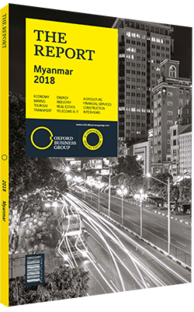Daw Moe Moe Lwin, Director, Yangon Heritage Trust: Interview

Daw Moe Moe Lwin: Interview
How would you assess the interest of foreign investors in preserving Yangon’s heritage buildings?
DAW MOE MOE LWIN: Yangon has multiple buildings identified as being historically valuable and part of the country’s architectural and cultural heritage. Following the opening up of the economy in 2011, investors were very keen to invest in Myanmar, and several companies contacted us to gather more information on Yangon’s local heritage and potential investment opportunities.
Given the city’s rich architectonic diversity, investors showed interest in nearly every available building that they could transform into a hotel, restaurant or residential space. At the time, business prospects were very attractive because real estate prices were extremely high. This was due to the limited supply of quality products in the market. Today, however, the picture is slightly different and interest has cooled down in the last two years, even though investors are still keeping a watchful eye on the market. One of the challenges that many investors faced was that many of the most relevant heritage buildings in Yangon belonged to different ministries or government agencies, which had their own plans to manage their properties. The lack of an integrated vision and intragovernmental coordination for the renovation of these buildings also reduced the appetite of investors. Lastly, the political transition and the National League for Democracy’s rise to power also brought some important changes to the way in which public buildings have been managed.
What are the challenges to both preserving Yangon’s heritage and furthering its development?
MOE MOE LWIN: The pressure resulting from urban development is arguably the central challenge to the city’s heritage. If the wave of construction and investment is not implemented with a holistic vision for the future of Yangon, growing demand for new residential and commercial areas will cause many buildings to disappear like they have in other cities across Asia. To address this issue, the Yangon Heritage Trust in collaboration with some international stakeholders has put forward the Yangon Strategy Plan, a long-term vision for the integrated urban development of Yangon.
In a nutshell, it strives to make Yangon one of the most liveable cities in South-east Asia by leveraging its geographic location, historic and cultural heritage, and architectonic diversity. By preserving its heritage, Yangon would boost its appeal to tourists and generate further revenue to invest in sustainable development. However, this will require a more effective mapping of the city’s heritage in order to fully understand which buildings and areas have historical value and should be preserved. In Europe, for instance, that work has been done. Heritage sites are well identified, and there are regulatory mechanisms in place to protect them. In Myanmar that regulatory framework is not yet in place, making it more challenging to find the right balance between development and preservation.
What are the priority areas of intervention?
MOE MOE LWIN: The priority zones for intervention are located in the downtown area of Yangon due to the concentration of heritage buildings there. Although it’s a challenging task, we are trying to protect the majority of colonial buildings and open more channels of communication with the Yangon City Development Committee. We have also strengthened relations with the Myanmar Investment Commission, which is increasingly aware of the importance of preserving local heritage, and is becoming more selective in attributing permits for interventions in areas designated as heritage.
One of the most important projects taking place at the moment is the rehabilitation and renovation of the former administrative seat of government, the Secretariat Office. There are a few other projects in the pipeline for conservation and renovation. Another priority task is to create a legalised action plan for intervention that opens up new opportunities for investment.
You have reached the limit of premium articles you can view for free.
Choose from the options below to purchase print or digital editions of our Reports. You can also purchase a website subscription giving you unlimited access to all of our Reports online for 12 months.
If you have already purchased this Report or have a website subscription, please login to continue.

